Lighting the Past: Next up, the Anderson Collection!
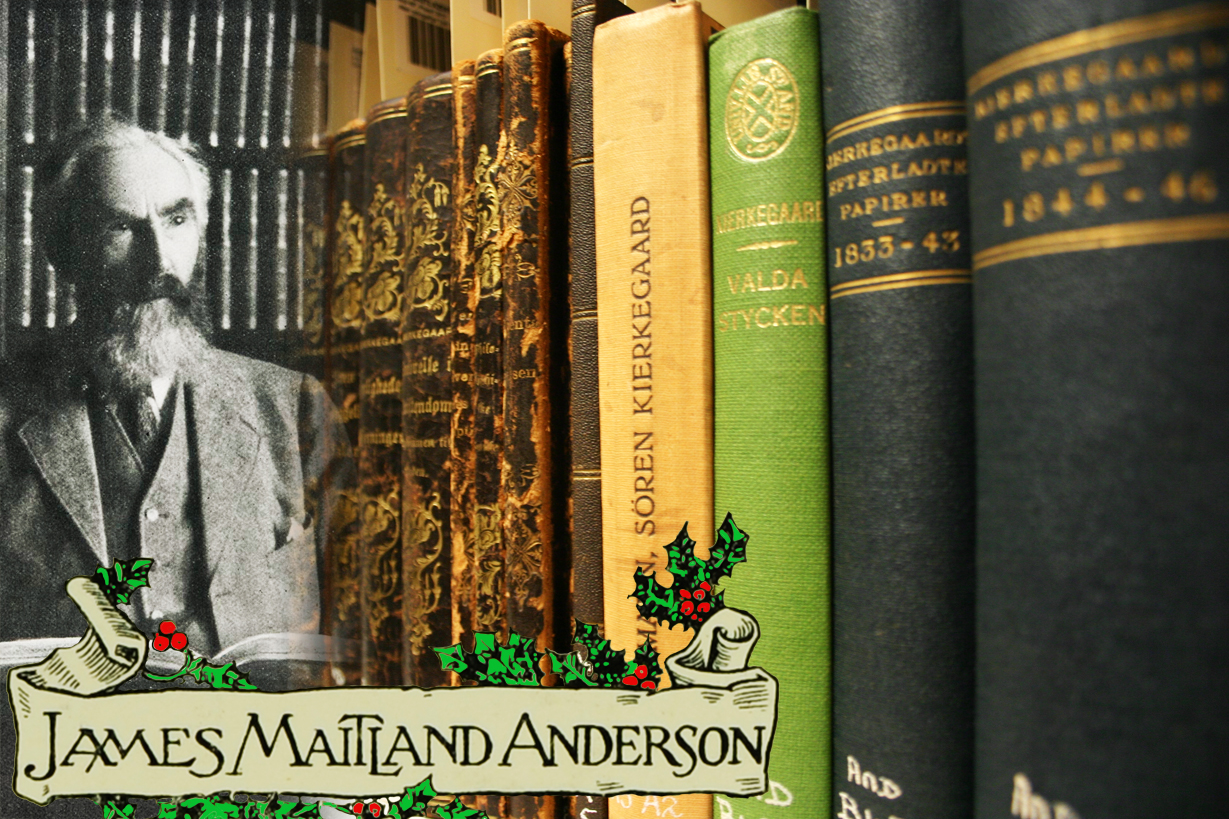 During a grueling (if not long-lived) summer heat wave, the Lighting the Past team has kept nice and cool in Special Collections where we’ve been hard at work cataloguing our second collection. This time around, we tackled the Anderson collection.
During a grueling (if not long-lived) summer heat wave, the Lighting the Past team has kept nice and cool in Special Collections where we’ve been hard at work cataloguing our second collection. This time around, we tackled the Anderson collection.
The Beveridge Collection had tested our cataloguing prowess and also thrown us a few curveballs, including the sneaky book-shaped-boxes Briony mentioned in our last post. We all wondered what surprises Anderson would have in store.
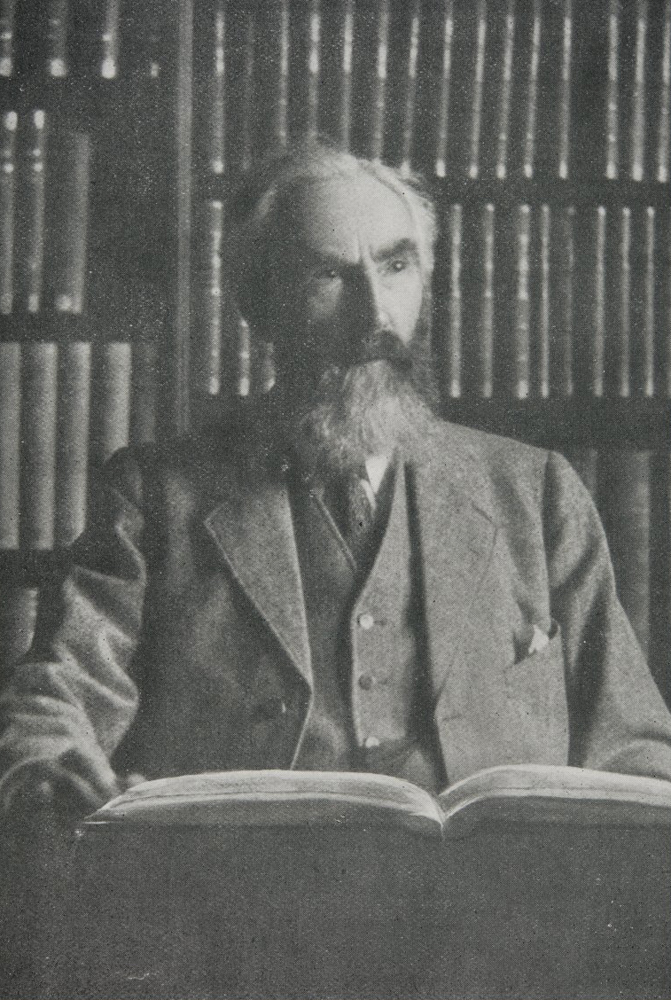
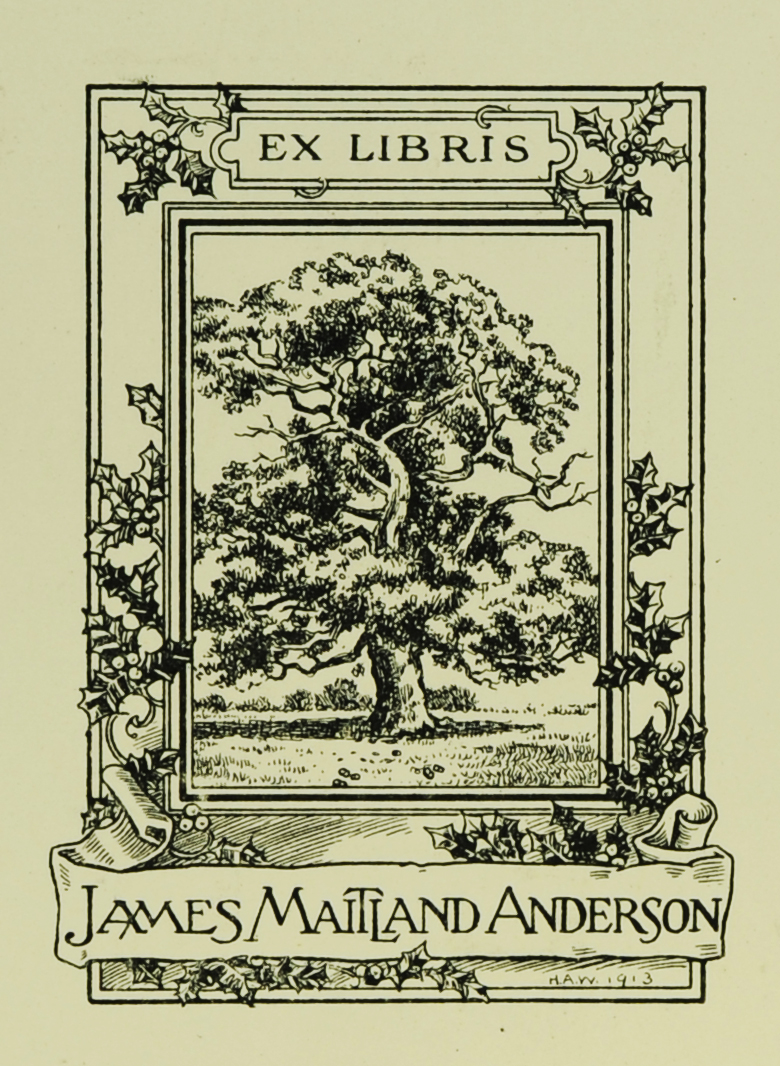
James Maitland Anderson (1852-1927) was a St. Andrews University librarian from 1881-1925 and his contribution to the University includes around 1000 volumes, primarily published in the 19th and 20th centuries. Anderson was also a prominent historian and his interests covered a variety of topics from history to education to philosophy to literature.
Like Beveridge, the Anderson Collection contains a number of books from Scandinavia and we cataloguers found ourselves in familiar territory as we encountered publishers and city names from Denmark, Norway, and Sweden. We didn’t even bat an eye when we typed a title into an online translator and it switched us from Norwegian to Danish to Norwegian again, now knowing that these programs sometimes have trouble distinguishing between the two languages. In short, we felt like seasoned pros.
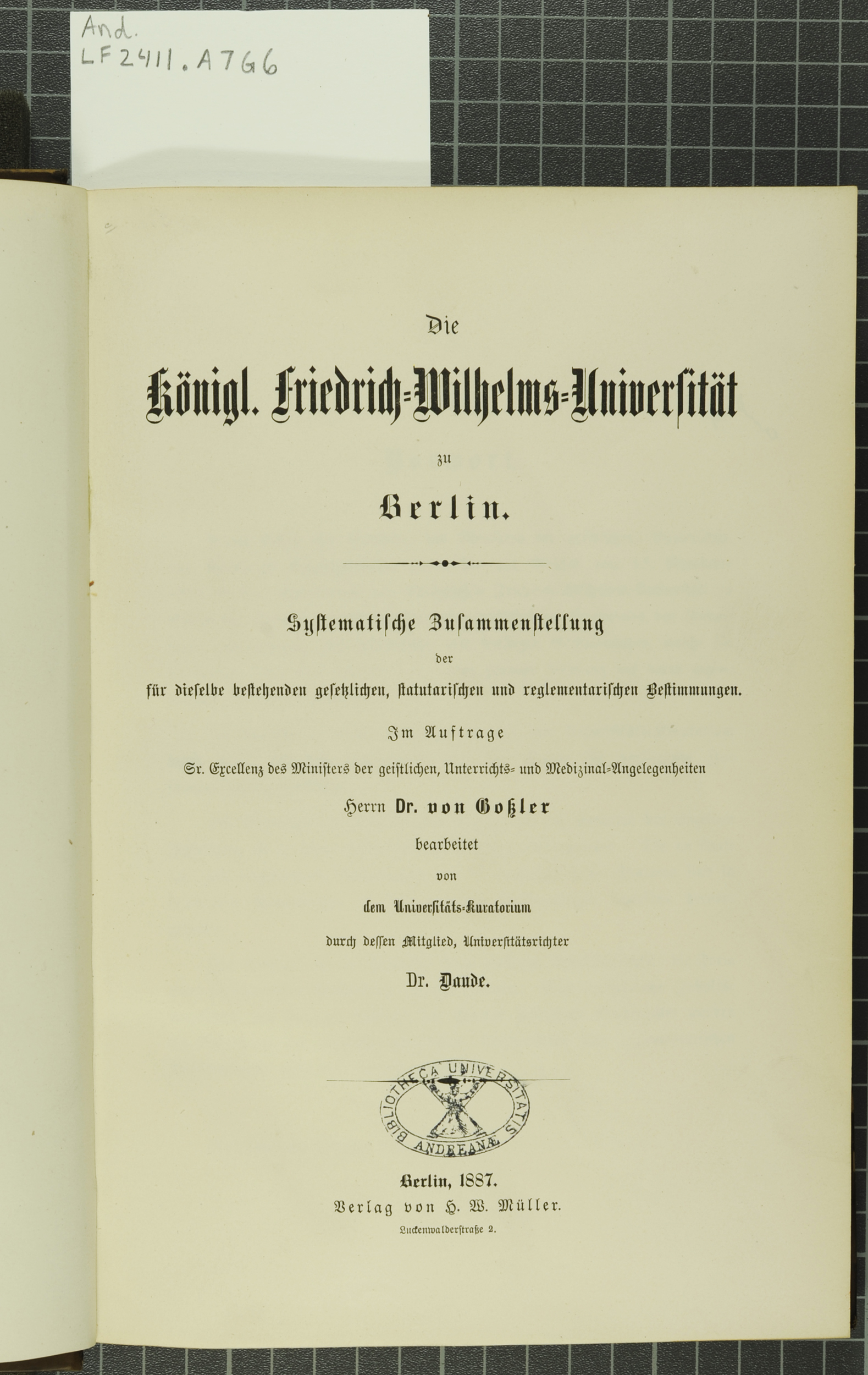
But Anderson had some new subject material to help us sharpen our SAULCAT skills. Anderson collected books on education history and some of the most impressive books we encountered were histories and records from universities throughout Europe. These books came from Dublin, Berlin, Bologna. Some were slender and unassuming. Others were hefty with thick leather binding, titles embossed in gold, and knobbly spines. One we found particularly striking was Alte und neue Studenten Lieder. Mit Bildern und Singweisen, a German book of songs for students. Although it’s a modest 19 cm in height and only 77 pages long, every page is rich with illustrations, some fantastical, some creepy, and all of them marvelously detailed.
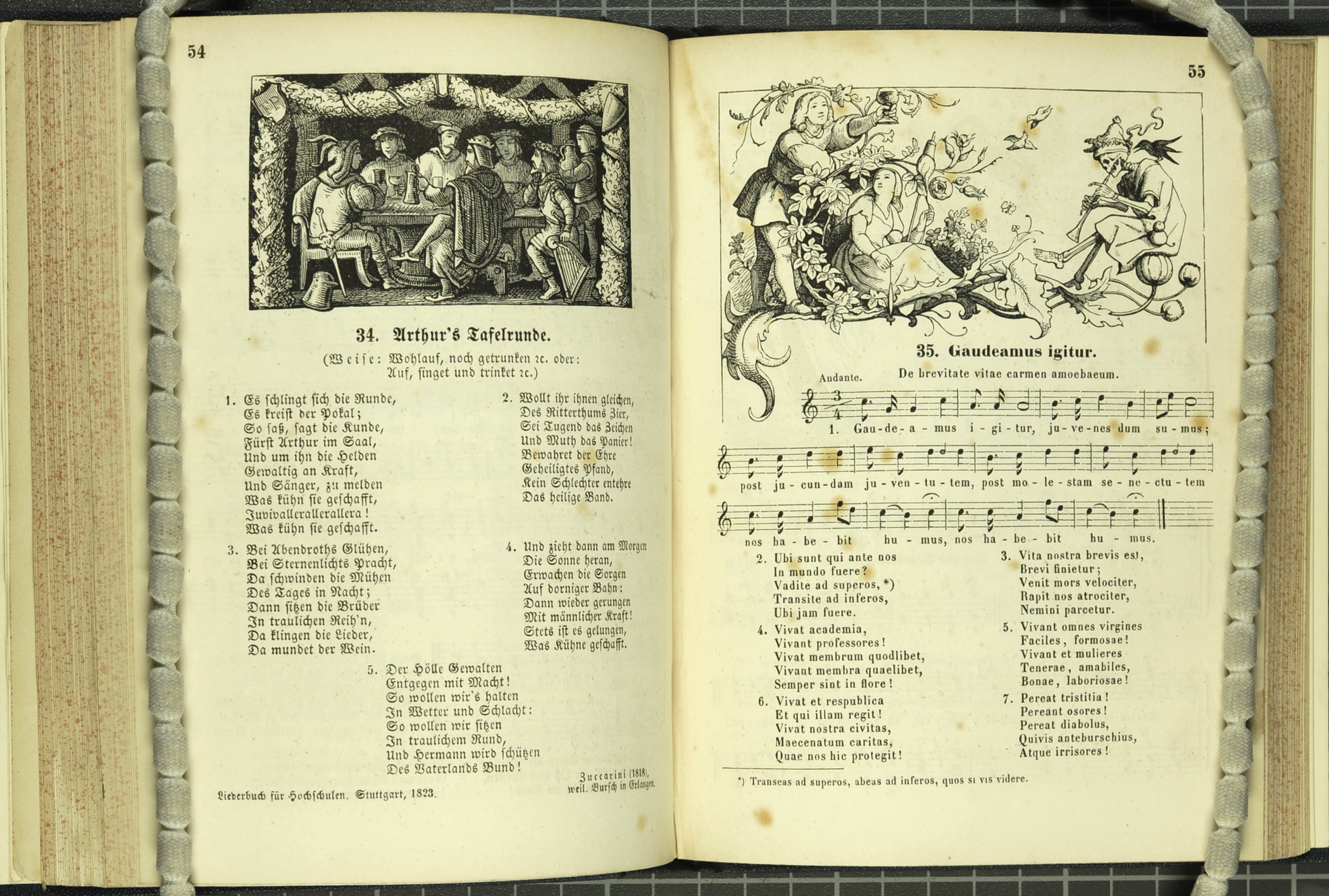
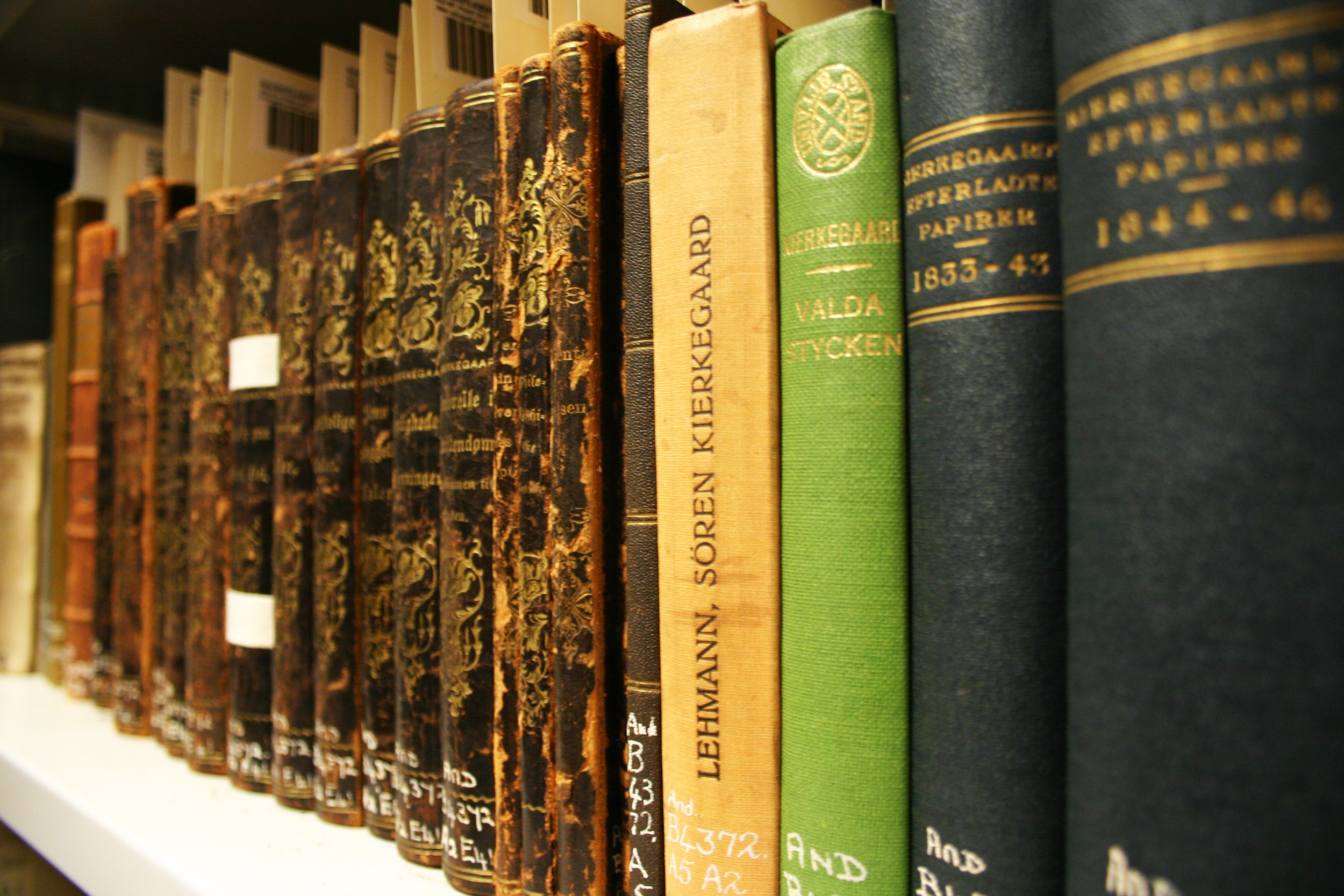
Anderson also devoted a significant portion of his collection to books on philosophy. One name that we encountered frequently was Søren Kierkegaard (1813-1855). Anderson had a strong interest in the Danish philosopher who is often considered the founding father of existentialism. The collection includes nearly seventy works by and about Kierkegaard. Some are published in original Danish and others in translation. Since Kierkegaard often wrote under pseudonyms, we came across a number of these as well. Either/Or: A Fragment of Life (Entweder – Oder. Ein Lebensfragment), for example, was originally published in 1843 under the pseudonym Viktor Eremita and is one of Kierkegaard’s most recognized titles. We have a German translation from 1885. This past May, Denmark celebrated the 200th anniversary of Kierkegaard’s birthday and Google even honored him as the subject of it’s daily doodle! So the timing couldn’t be more perfect for us to get these books on the online system.
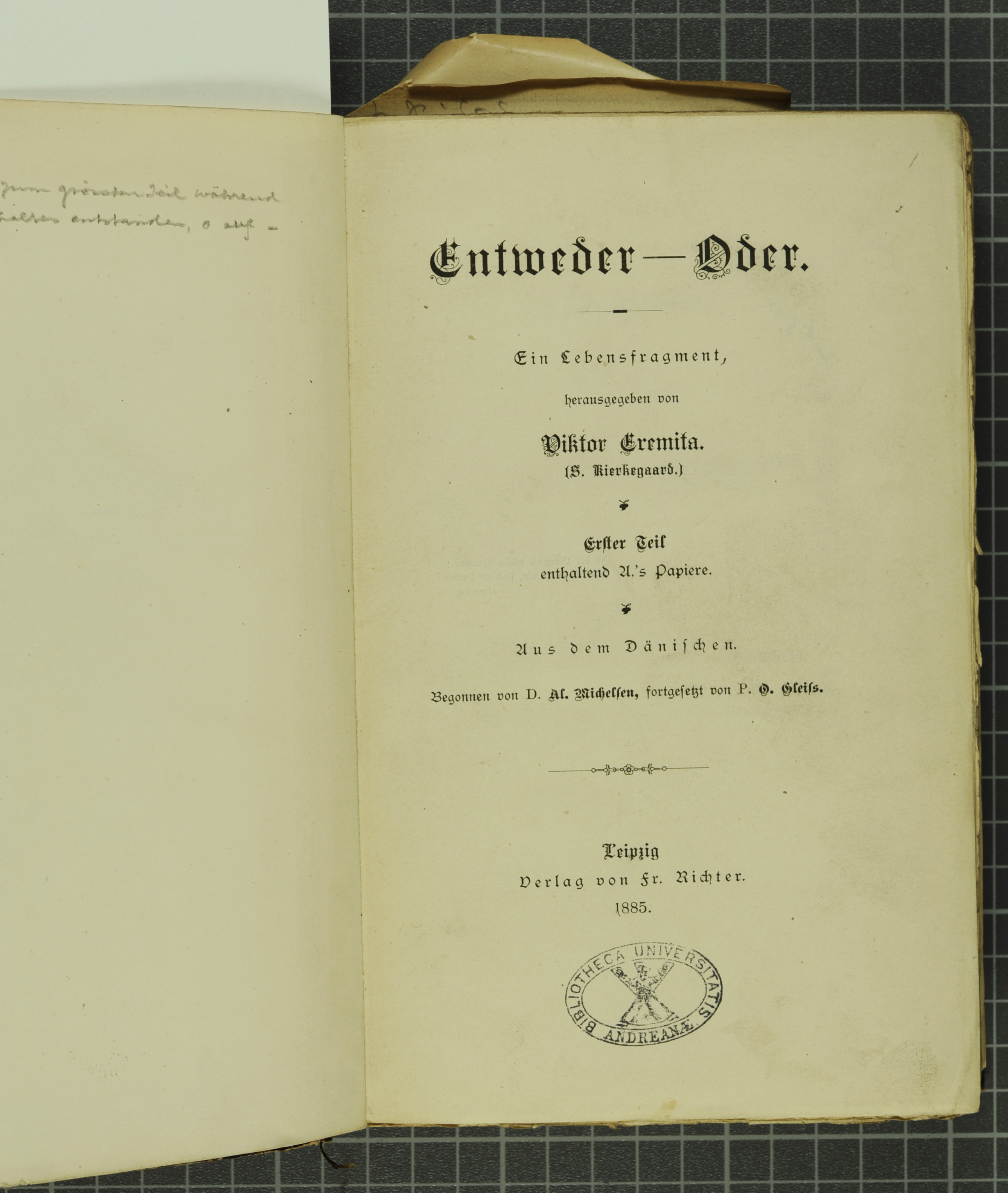
(And PT8142.E6M4) It’s one of several books by and about the Danish philosopher housed in the Anderson Collection.
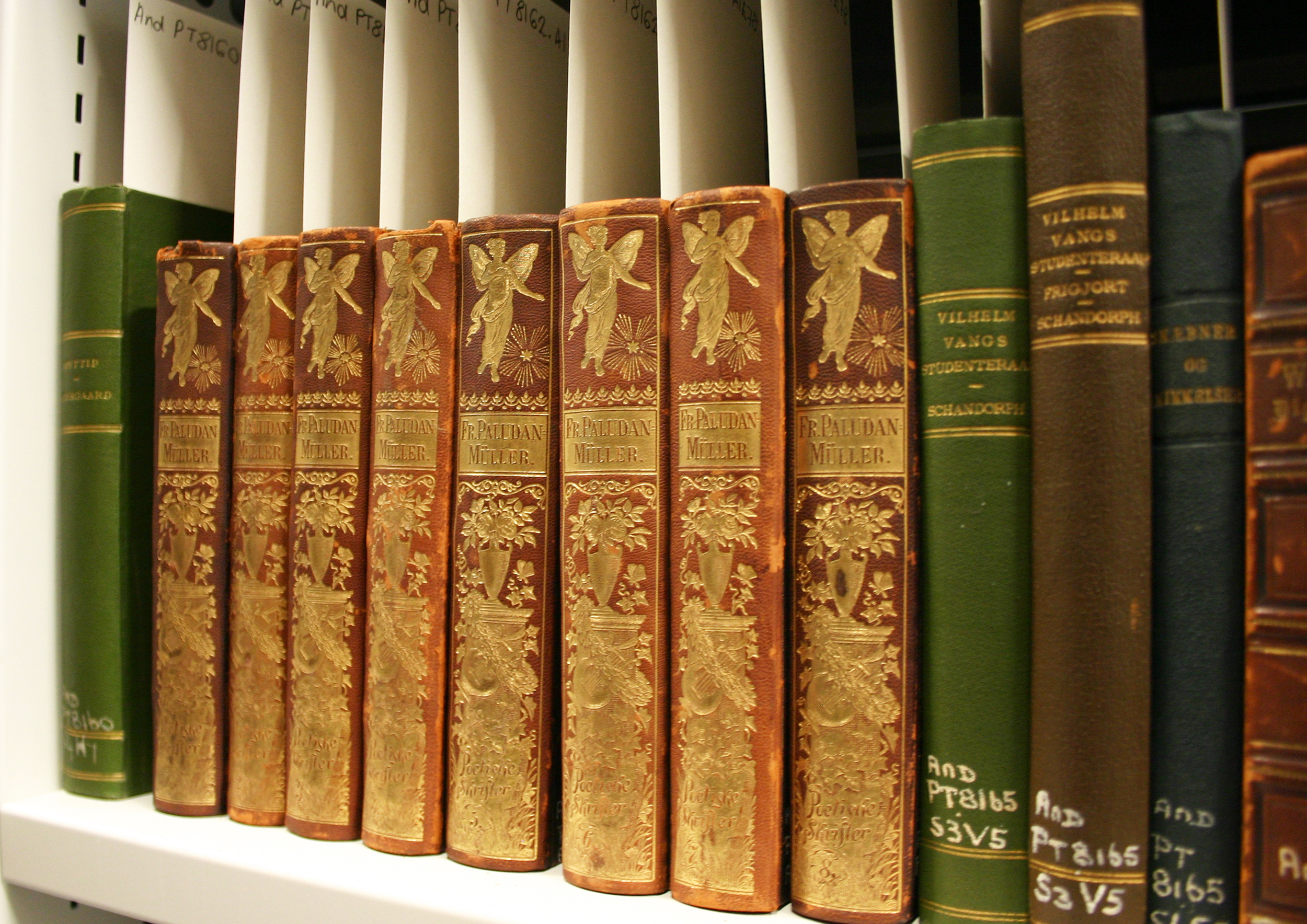
Often compared to Kierkegaard, the Danish poet Frederik Paludan-Müller was another author we found in the Anderson collection. His Poetiske Skrifter (Poetic Works) is a multi-volume set that jumped off the shelves with an incredibly intricate design on all 8 of its spines. In terms of beautiful books, Anderson certainly isn’t lacking.
Over the course of 3 ½ weeks, we created 699 bibliographic records and 795 item records. You can find all the records here. But we’ve little time to toast the successful completion of Collection #2. Just in time for the upcoming term, we’re buckling down to undertake the mammoth St. Andrews Collection. There are sure to be challenges, but, as in the last two collections, I’ve no doubt we’ll find gems as well. We can’t wait to share them you. And now, back to cataloguing!
–Cecilia Vinesse
Phase 1 Cataloguer
Amazing collection. There a few things as soothing, yet exhilarating, as a shelf (or more) of books.